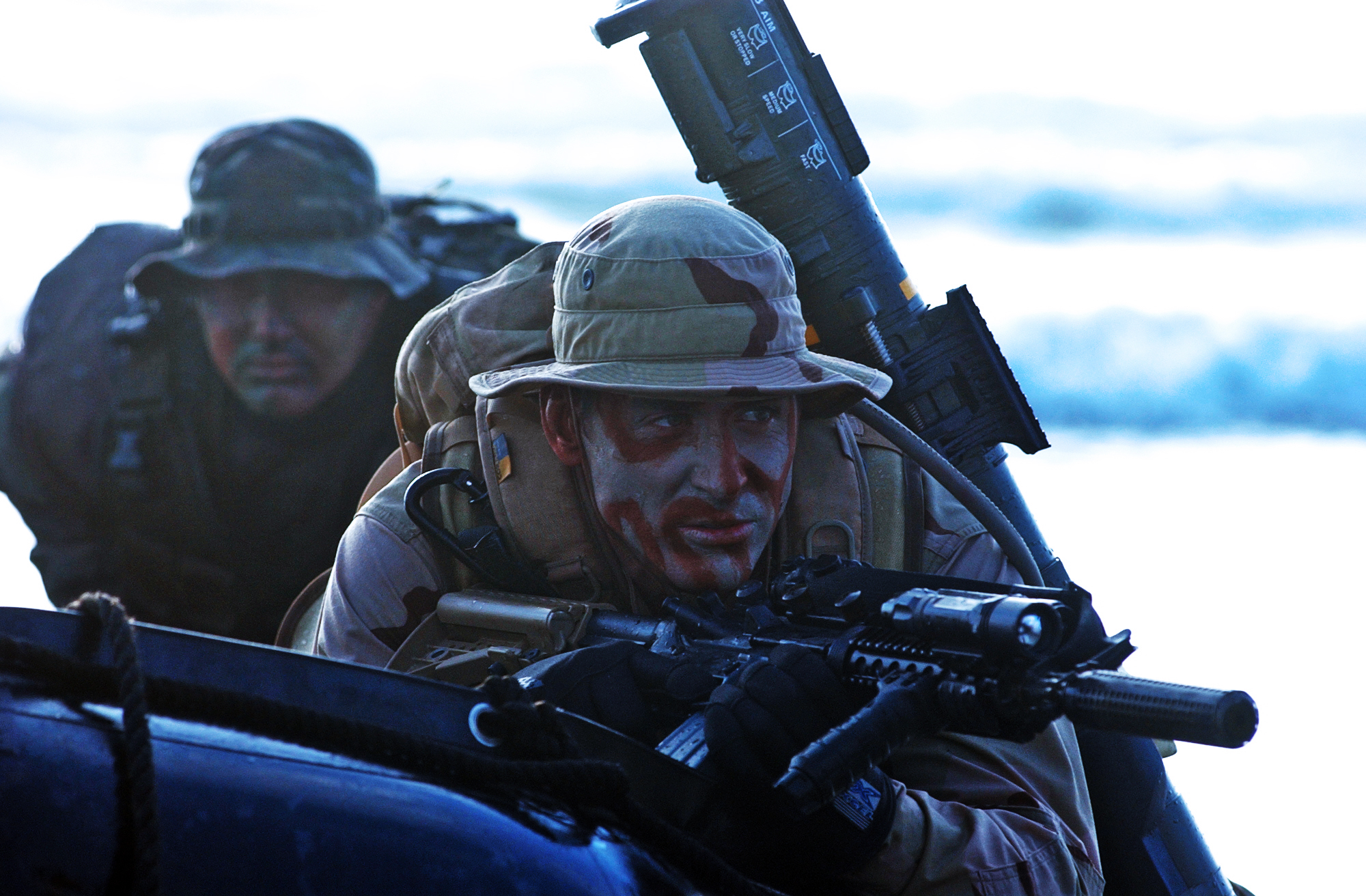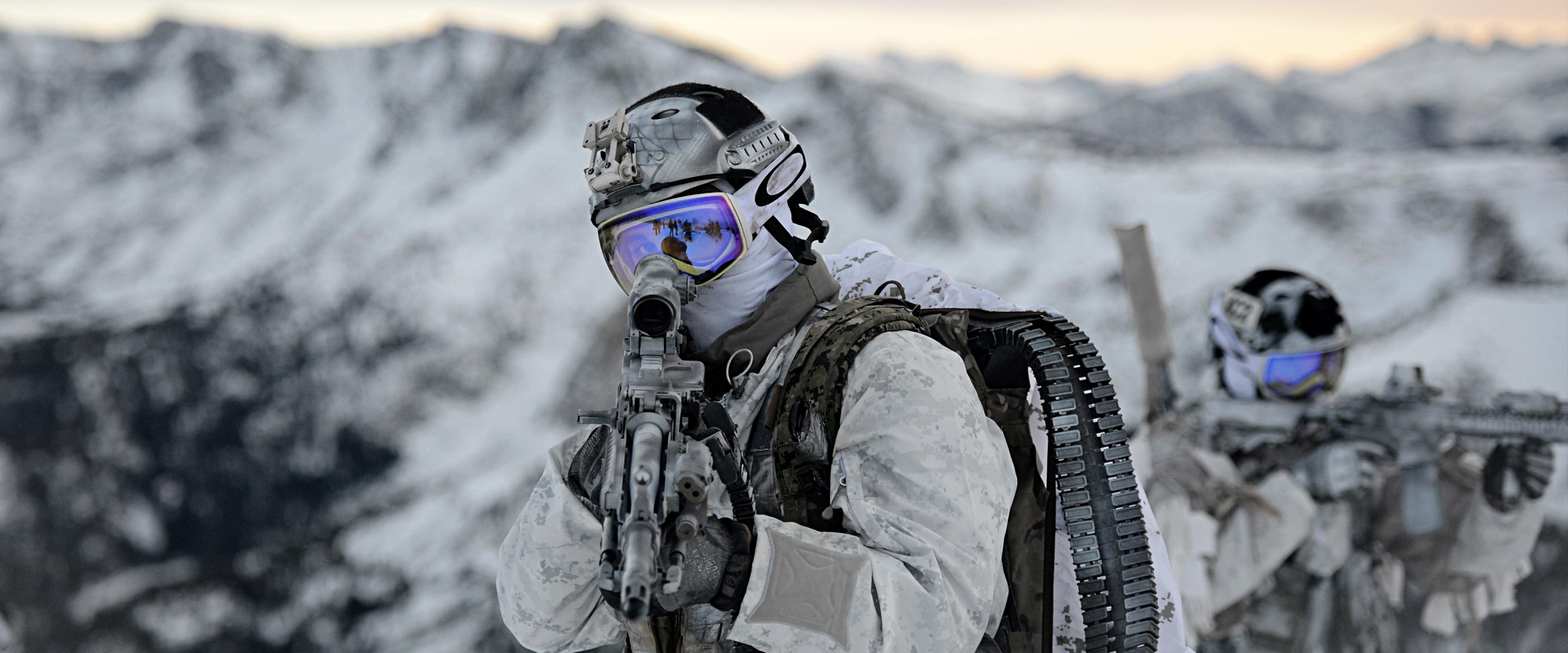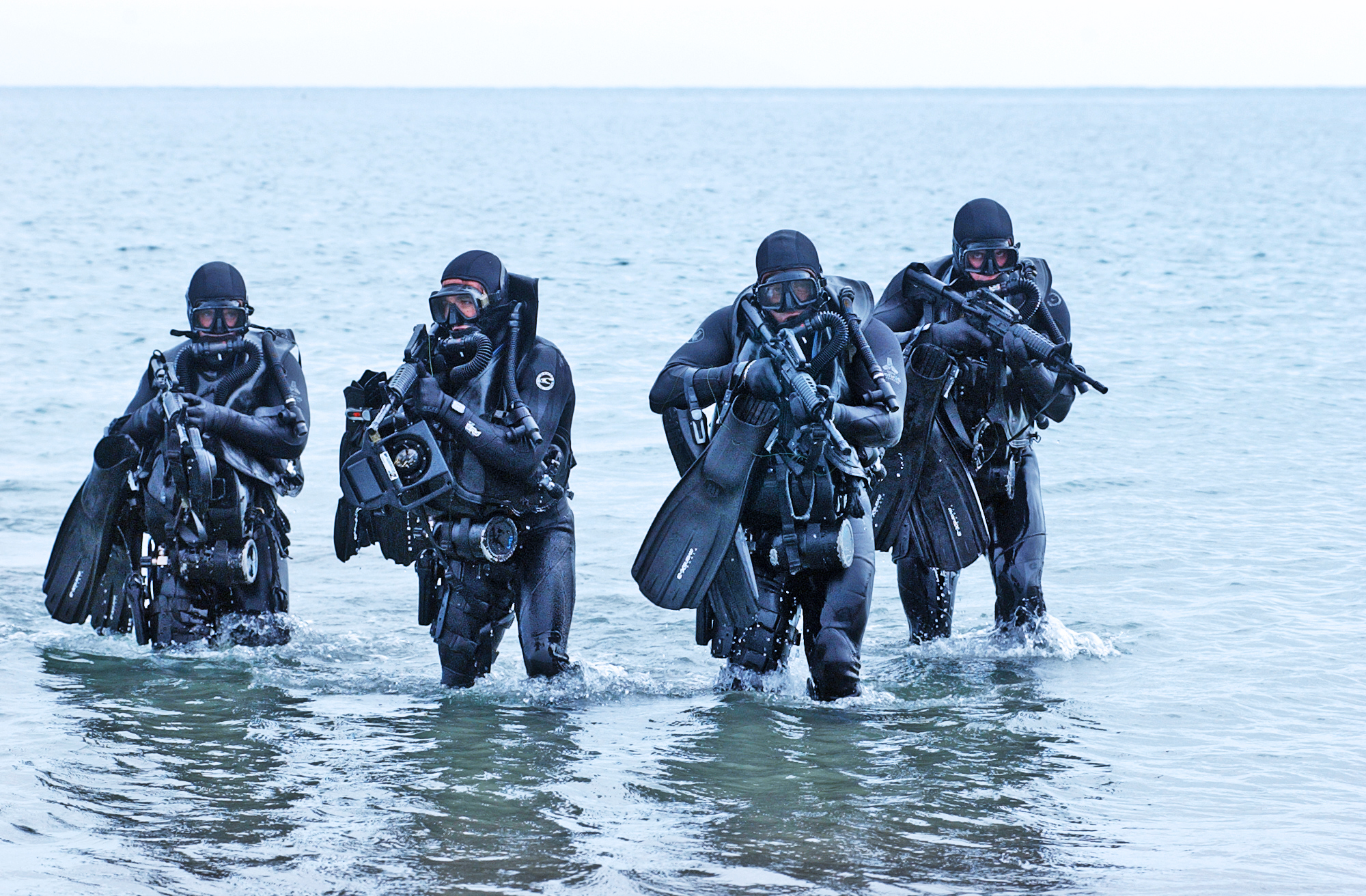All About Navy SEALs: What Makes Them Elite? [Ultimate Guide]
Ever wondered what it takes to be among the world's most elite warriors? It's not just about physical prowess; it's about a relentless spirit, strategic brilliance, and an unwavering commitment to the mission. Prepare to delve into the multifaceted world of the Navy SEALs, where we'll dissect their operations, grueling training, and the very essence of what makes them the epitome of special forces.
Imagine operatives capable of seamless transitions from land to sea to air, masters of adaptation in the face of any challenge. These are the Navy SEALs, more than mere soldiers; they are tacticians, problem-solvers, and ultimate survivors. Our mission is to explore the critical question: what exactly do Navy SEALs do? We will dissect their roles and responsibilities with meticulous detail.
| Category | Description |
|---|---|
| Organization Name | United States Navy SEALs |
| Founded | January 1962 |
| Country | United States of America |
| Type | Special Operations Force |
| Role | Direct Action, Special Reconnaissance, Counter-Terrorism, Unconventional Warfare |
| Size | Approximately 2,400 active duty SEALs |
| Headquarters | Naval Amphibious Base Coronado, California |
| Motto | "The Only Easy Day Was Yesterday" |
| Official Website | https://www.sealswcc.com/ |
To truly understand the modern Navy SEAL, its critical to appreciate their historical roots. The lineage traces back to World War II, a period that demanded innovative naval tactics. The U.S. Navy responded by creating Naval Combat Demolition Units (NCDUs) and Underwater Demolition Teams (UDTs). These specialized units were the vanguard, tasked with the perilous job of clearing beach obstacles to pave the way for amphibious landings. Their courage and expertise laid the foundation for what was to come.
- Kyla Dodds Onlyfans Leaks The Full Story And Whats Next
- Discover Telugu Cinema News Reviews Amp Alternatives To Movierulz
The official establishment of the Navy SEALs occurred in 1962, under the visionary leadership of President John F. Kennedy. Recognizing the shifting landscape of global conflict, Kennedy understood the need for elite forces capable of engaging in unconventional warfare and counterinsurgency operations. Thus, the SEALs were formally created, prepared to execute missions demanding the highest levels of stealth, pinpoint precision, and unparalleled adaptability. This marked a pivotal moment in military history, ushering in an era of specialized warfare.
Evolution Over the Years
From those relatively modest beginnings, the Navy SEALs have undergone a dramatic transformation, evolving into one of the most globally respected and, indeed, feared special operations forces. Their operational history is rich and varied, encompassing countless missions spanning from the jungles of Vietnam to the deserts of Iraq and the mountains of Afghanistan, and countless other clandestine operations across the globe. Every mission has contributed to their formidable reputation as elite warriors capable of thriving in the most hostile and unforgiving environments.
The key to their enduring success lies in their capacity for continuous adaptation. They remain consistently ahead of the curve by embracing technological advancements, responding to evolving global threats, and integrating cutting-edge tactical innovations. This commitment to perpetual learning and refinement is what sets them apart.
- Whats Okx A Beginners Guide To The Crypto Exchange Tips
- Filmyfly South Bollywood Hindi Your Ultimate Movie Destination Guide
At the heart of the Navy SEAL mystique lies their legendary training regimen. To call it tough is a gross understatement. SEAL training is meticulously designed to break down candidates, strip away their perceived limitations, and forge them into something far greater than they ever thought possible. It transcends mere physical strength; it's an excruciating crucible that tests mental fortitude, instills unbreakable teamwork, and hones the ability to think critically and decisively under extreme duress.
BUD/S
The gateway to becoming a Navy SEAL is the Basic Underwater Demolition/SEAL (BUD/S) training. This brutal six-month program is strategically divided into three distinct phases: Basic Conditioning, Dive Phase, and Land Warfare Phase. Each phase is designed to progressively push candidates to their absolute breaking points, subjecting them to a level of physical and mental exhaustion that would make even seasoned athletes question their life choices. Its a relentless assault on the senses, designed to reveal who can truly endure and overcome.
- Week 1: Hell Week The stuff of legends, where sleep deprivation becomes a constant companion and physical exhaustion reaches unimaginable levels.
- Phase 2: Dive Training The mastery of underwater operations, encompassing everything from basic diving techniques to advanced combat diving skills.
- Phase 3: Land Warfare The acquisition of comprehensive combat skills and tactical expertise, ensuring proficiency in all aspects of ground warfare.
Perhaps the most sobering statistic is the attrition rate: only approximately 25% of those who begin BUD/S actually make it through to the end. This stark reality underscores the immense challenges involved and the extraordinary commitment required. It's a testament to the fact that becoming a Navy SEAL is not for the faint of heart, nor for those lacking the unwavering resolve to push beyond their perceived limits.
What, then, do Navy SEALs actually do? The answer, in short, is that they are entrusted with missions deemed too dangerous, complex, or politically sensitive for conventional military forces. These missions span a wide spectrum of operations, from direct action raids to clandestine intelligence gathering, and everything in between, requiring a unique blend of skills and adaptability.
Types of Operations
Lets delineate the primary types of operations in which Navy SEALs are typically involved:
- Direct Action: This includes missions such as raiding enemy compounds to neutralize threats, capturing high-value targets, and engaging in offensive operations.
- Special Reconnaissance: This entails gathering critical intelligence within hostile or denied environments, often involving covert surveillance and reconnaissance activities.
- Counterterrorism: This focuses on dismantling terrorist networks, preventing attacks, and rescuing hostages in high-risk scenarios.
- Unconventional Warfare: This involves supporting resistance movements, training foreign forces, and conducting guerrilla warfare operations in support of U.S. foreign policy objectives.
These diverse missions demand a unique and versatile skill set, coupled with the ability to rapidly adapt to fluid and unpredictable situations. Navy SEALs are meticulously trained to think on their feet, make split-second decisions under immense pressure, and operate effectively in the face of extreme adversity. This is the reason for their unmatched effectiveness in the field.
The effectiveness of a Navy SEAL is heavily reliant on the tools they wield. From state-of-the-art weaponry to advanced communication systems, their gear is carefully selected and meticulously maintained to ensure optimal performance. Let's examine some of the key equipment utilized by Navy SEALs:
Weapons and Gear
- Rifles: The M4 carbine and the Mk 18 Mod 1 are favored for their versatility and effectiveness in close-quarters combat.
- Pistols: The SIG Sauer P226 is a standard sidearm, valued for its reliability and accuracy.
- Communication: Advanced encrypted radios and satellite phones are essential for maintaining constant communication with and higher command.
- Survival Gear: From GPS devices and advanced navigation tools to comprehensive first aid kits and emergency supplies, SEALs are rigorously prepared for any contingency.
Possessing the best gear is only half the equation; knowing how to use it effectively is paramount. Navy SEALs undergo relentless training to ensure they can operate their equipment with proficiency and precision in any environment, from the depths of the ocean to the highest mountain peaks.
Do you possess the necessary attributes to become a Navy SEAL? The selection process is a gauntlet designed to identify those with the mental and physical fortitude to withstand the rigors of SEAL life. Here's a glimpse into what prospective candidates can expect:
Physical and Mental Challenges
Exceptional physical fitness is merely the starting point. Candidates must demonstrate unwavering mental toughness, proven leadership capabilities, and the ability to function seamlessly as part of a cohesive team. The selection process incorporates:
- Rigorous physical screening tests (PST) to assess strength, endurance, and water competency.
- In-depth interviews and comprehensive psychological evaluations to determine mental stability and suitability for special operations.
- An intensive indoctrination phase designed to test resilience and adaptability under extreme pressure.
The underlying principle is clear: it's not merely about brute strength; it's about intellect, adaptability, and unwavering resilience. Only the truly exceptional individuals make it through this rigorous selection process.
The psychological makeup of a Navy SEAL is what truly distinguishes them. SEALs are trained to not merely tolerate chaos, but to thrive within it. They cultivate an unwavering ability to remain calm under intense pressure and make life-or-death decisions with clarity and precision. But how is this extraordinary mindset developed?
Building Mental Toughness
The foundation is built through unrelenting training. By enduring relentless challenges and overcoming seemingly insurmountable adversity, SEALs learn to push past their self-imposed limits and maintain unwavering focus on the mission at hand. They develop an unbreakable reliance on teamwork and mutual trust, secure in the knowledge that their fellow SEALs will always have their backs, regardless of the circumstances.
The mental fortitude of Navy SEALs is a subject of intense study by psychologists, who seek to understand how they effectively manage stress and overcome adversity. Their remarkable ability to remain calm, focused, and decisive in high-pressure situations provides valuable insights applicable to various fields, from business to sports.
Throughout the history of the Navy SEALs, certain individuals have risen to legendary status. These individuals have not only excelled in their operational roles but have also made profound contributions to the broader world of special operations.
Biography of Famous SEALs
| Name | Born | Rank | Notable Achievements |
|---|---|---|---|
| Chris Kyle | 1974 | Chief Petty Officer | Known as the "American Sniper," credited with the most confirmed sniper kills in U.S. military history, and author of the bestselling book "American Sniper." |
| Rob O'Neill | 1976 | Senior Chief Petty Officer | Reported to have fired the shots that killed Osama bin Laden during Operation Neptune Spear and a highly sought-after public speaker. |
| Marcus Luttrell | 1975 | Petty Officer First Class | Navy Cross recipient for his actions during Operation Red Wings. Author of the book "Lone Survivor." |
These Navy SEALs are far more than just warriors; they are potent symbols of unwavering excellence, selfless dedication, and unparalleled commitment to duty. Their compelling stories serve as a source of inspiration for countless individuals who aspire to pursue a career in special operations and beyond, demonstrating the profound impact that dedication and resilience can have.
Life as a Navy SEAL is not solely defined by glory and heroic achievements. It involves significant challenges that can exert a heavy toll on both the physical and emotional well-being of these elite warriors. It is essential to acknowledge the obstacles they face:
Physical and Emotional Strain
- Injuries: The intensely demanding nature of their training and operational deployments makes SEALs highly susceptible to a wide range of injuries, from musculoskeletal strains to traumatic brain injuries.
- PTSD: The cumulative psychological impact of repeated exposure to combat and high-stress situations can lead to post-traumatic stress disorder (PTSD) and other mental health challenges.
- Family Life: Balancing the demands of a career in the military with the responsibilities of family life can be exceptionally challenging, often requiring prolonged periods of separation and placing significant strain on relationships.
Despite these considerable challenges, Navy SEALs continue to serve with unparalleled honor and unwavering dedication. Comprehensive support systems, both within the military and in the broader civilian community, play a vital role in helping them overcome these obstacles, ensuring they receive the necessary care and assistance to thrive both during and after their service.
As the global landscape continues to evolve, so too do the demands placed upon Navy SEALs. The future of special operations will likely be characterized by rapid advancements in technology, shifting global threats, and the development of new and innovative tactics. Here's a glimpse into what we can anticipate:
Technological Advancements
From unmanned aerial vehicles (drones) to artificial intelligence (AI) and advanced cyber capabilities, technology is increasingly integral to modern military operations. SEALs will need to adapt to these changes and seamlessly integrate new tools and technologies into their existing skill sets. However, one fundamental element remains constant: the human element. Regardless of how advanced the technology becomes, SEALs will always rely on their exceptional training, extensive experience, and unbreakable teamwork to successfully execute their missions.
- Kyla Dodds Onlyfans Leaks The Full Story And Whats Next
- Axl Rose Children The Untold Family Story Of A Rock Legend

Strength Navy SEALs

U.S. Navy Special Operations Careers

An Association of SEALs Navy SEALs